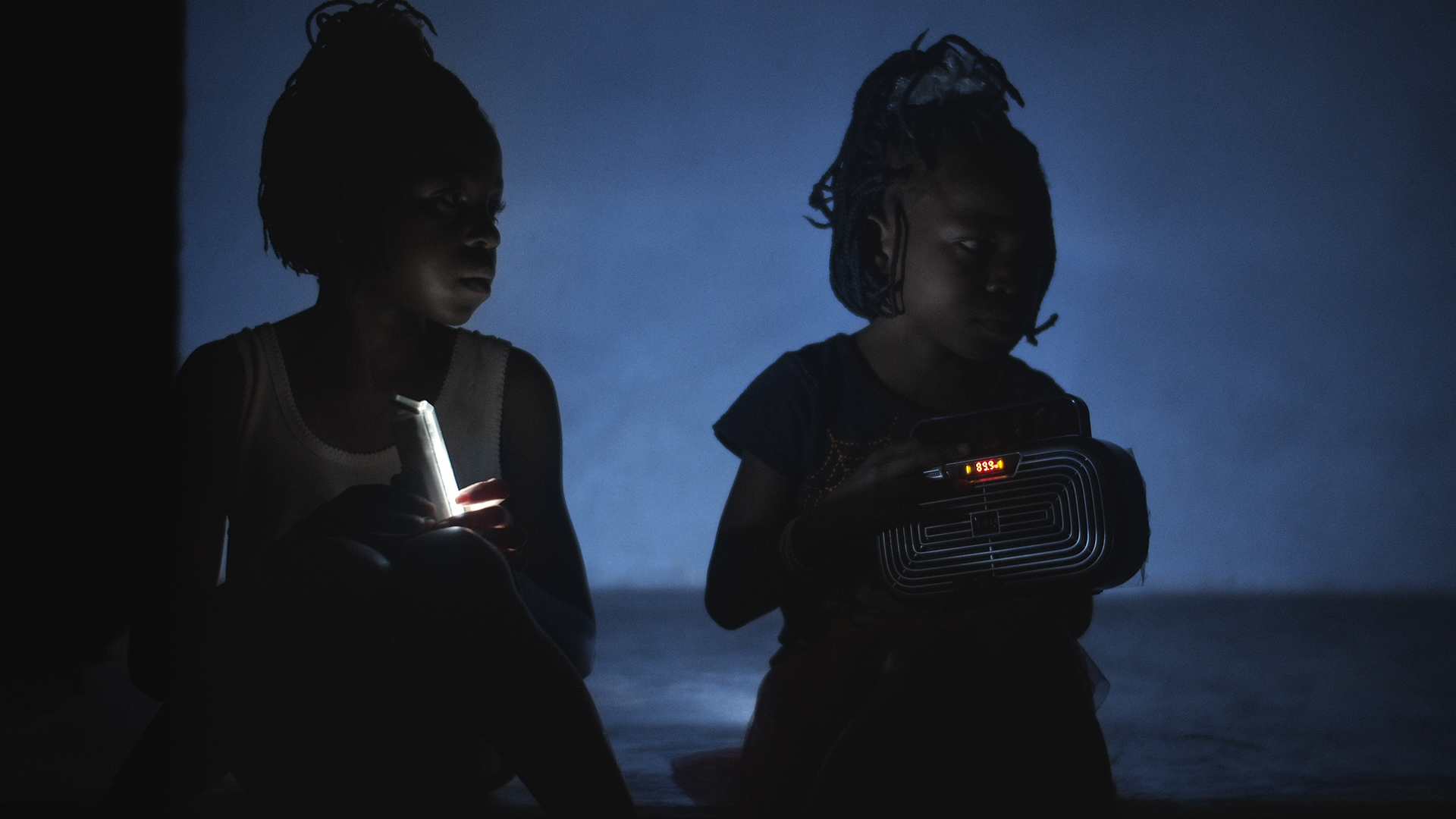by Xavier Alexandre Pillai
Tongo Saa (Rising Up at Night) (2024) is Nelson Makengo’s debut feature documentary. The film follows his 2019 bronze foal-winning short film Up At Night. That short, originally a multichannel gallery piece, carries the genesis of an ongoing project documenting Kinshasa’s nightlife. More accurately, however, this film focuses on how life occurs at night. Small light sources, matches, plastic toy lighting, car lights, battery-powered lights, and phone screens all illuminate life in Kinshasa. The camera light registers a barely detectable sheen on the shadows moving throughout the city.

Thus, the film addresses a central question: How do you film the night without light? From what appears to be a simple starting point, the film upends this premise, conceptually supplanting this query as it guides the audience through Kinshasa. As we traverse these nights, we hear night soundtracked by life in the day. The film propels us through the city, sonically charting ongoing congregations of generative communal activity. A community that, through its suffering, constantly questions how life operates in the city.
i) How can we protect ourselves when we cannot see?
The importance of widows in Congolese society is mirrored within this film, and they constitute the moral voice within the film. Making up almost half of all women in the DRC, they reprise their embodied political role, addressing the consequences of darkness. They sit amongst the low lights, discussing the struggle to defend their communities from accidents, male violence and ecological destruction when they cannot see. The night takes on new threats, and spectres of past events are reanimated in the darkness:
“When I was buying bread this morning, I mistook a tree for a real person! So I took off running and I fell over. I thought it was a bandit trying to kill me!”
These moments, intertwined with the consequences of societal violence carried out at night, render an inability to distinguish between the real and the false, amplifying these concurrent terrors.
Painfully crystallised:
“We don’t even recognise our own kids. Our children are getting raped because of this darkness!”

These cascading forms of violence are ongoing, bleeding into an everyday oversaturation. Repeated inundation floods the city, which transposes the fear of the outside to inside the home as the river Congo flows everywhere, making the waters slowly rise and capture the earth.
The ongoing removal of power cables shapes a new space; this cartography of dahoulage dictates if, how, where and who can move. On top of the threat of gendered violence that increases with a lack of electricity, missing cables show where children cannot go at night and reveal the unlit paths that are more dangerous for women travelling alone. The stolen cables map an assortment of random dangers: holes for people to fall into, the possibility that gaps in the energy infrastructure lead to the electrocution of those caught in the oncoming waters, the darkness means people cannot detect the flood waters which come often and intensely, this year displacing half a million people.
Makengo’s camera travels through the night, assuredly unveiling the dangers by taking us through the safe space of the community. It deftly moves us into the heart that binds those in the city, the lighthouse through which people persevere: faith.

ii) How can we keep faith that things will get better?
Makengo maintains a thematic continuity with his earlier films; he revisits the role of Christianity and its relation to pacification and external exploitation but in a more explicit fashion. Throughout Tongo Saa, his camera is immersed in faith in the city, a marked departure from the playful theoretical lens of “Theatre Urbain,” which used a Barbie figurine and Captain America to tell the story of the Congolese religious figure, Kimpa Vita. Instead, we are submerged in spiritual practices and hear long sermons of profound conviction: “Jesus is Congolese. I believe he’s Congolese because our country is Christian.”
Christianity in Kinshasa is syncretic and holds a substantial guiding place in culture. It presents a lens through which to understand and perceive the city’s problems. This unshakeable faith is interwoven in the everyday perseverance of the city’s people, who refuse to blame politicians for the extractive conditions under which they live, processing this suffering as part of a path to redemption. Faith undergirds much of the nighttime activity in the film. Even late-night workout sessions are punctuated by remarks and references to Christ, “Sexy body. Christ body.”
The focus on these faith communities is immersive, tuning us into life and distancing us from politics. By training his camera here, he takes us through a detailed examination of the everyday. This emphasises distance from the extractive politics operating above this realm. This contrast is sharpened by how Makengo chooses to relay these extractive elements. He punctuates the transitions between religious ceremonies, homes submerged in flood waters and family gatherings with the sound of broadcasts.
We hear developments about the Inga III dam through broadcast news and radio, and this distance is essential in fostering an understanding of how exploitation feels. These developments are dispossessing the citizens of Kinshasa, and we experience that through this closeness to their lives. The alienation undermines their safety, infrastructure, and ability to see through these long nights.
Xavier Alexandre Pillai is a curator at the BFI, a writer, a film programmer and a trustee at LUX Moving Image based in London. He can be found online: @Xavi____a
If you enjoyed this article, please consider tipping the author and/or supporting Ultra Dogme on Patreon or Ko-fi, so that we may continue publishing writing about film + music with love +care.

